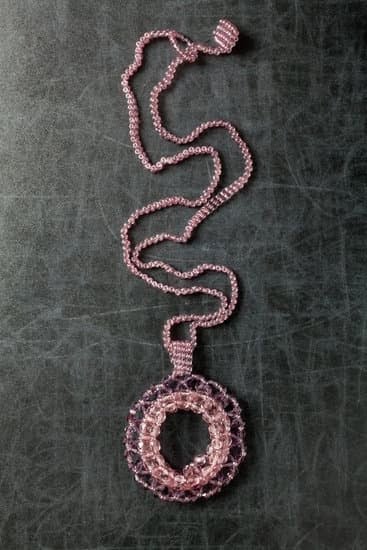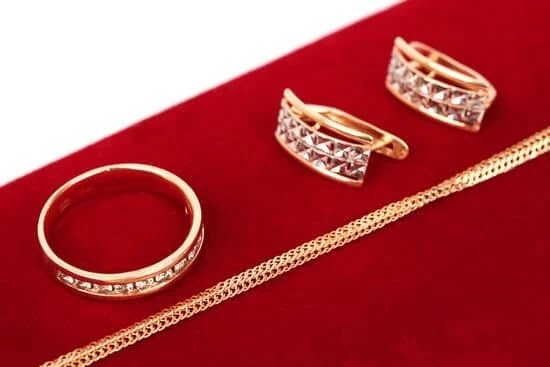Introduction
Tooth preservation for jewelry is a craft that uses teeth from animals or humans as the centerpiece of a piece of jewelry. Teeth can be preserved in any number of ways, so that the charm and character of your tooth will last for many years to come. Some popular choices include preserving the tooth in resin, glass, metal, or even creating molds for casting. Each method offers its own unique challenge and is best-suited for certain types of jewelry items, depending on your preference. In this article we will explore the different techniques used to preserve teeth for jewelry-making.
Preserving Teeth with Resin: Wooden Mold
One way to preserve a tooth is by using wood as a mold while using resin to stick it in place. This method works particularly well when making necklaces as it allows you to make various shapes and sizes out of the resin before adhering the tooth in place. Begin by drilling small holes into the wood according to your desired shape and size before pouring in a layer of resin into each hole—the other side should be open and ready to receive your tooth. Once all holes are filled with resin, carefully place your tooth into each one and let dry overnight, then sand off any excess resin if needed before assembling into a necklace or other item!
Preserving Teeth with Glass: Non-Toxic Glue
For an alternative approach to preserving teeth for jewelry-making, non-toxic glue can be used on glass objects such as beads or cabochons. To begin with this method, you’ll need to clean the surface of your bead thoroughly with alcohol swabs prior to gluing the tooth onto it—this ensures nothing but the glue makes contact with the surface of your bead so that no odors come through during wear time (which can sometimes happen in more damp climates). Put some glue onto a Q-tip or cotton ball and gently press onto one side of your tooth—gently roll it around until most surfaces have been covered & add some tweezers if necessary—then quickly adhere it onto your bead before drying fully! Let sit overnight or longer until completely cured before wearing.
Necessary Materials and Tools
Preserving teeth for jewelry is a cherished tradition that allows you to always have a reminder of your memories. To properly preserve your teeth you will need the following materials and tools:
-A large sealable plastic bag for each individual tooth
-Bleach
-Sterile gloves
-Tweezers
-Rubbing alcohol or antiseptic mouthwash
-Small paintbrush or cotton swab
-Small piece of waxed paper or parchment paper
-Soft cloth rag or cotton ball
Once you have all of the necessary materials, begin by putting on your sterile gloves. Place one tooth at a time in the sealable plastic bag and fill it with bleach until the tooth is entirely submerged. Let it sit overnight and then rinse away any residual bleach with running water. Soak the tooth in rubbing alcohol or antiseptic mouthwash for 5 minutes to disinfect further. Take the tweezers to carefully remove any remaining debris from the surface of the tooth. Then use a small paintbrush or a cotton swab to apply an additional coating of rubbing alcohol to ensure it is free from bacteria before placing it onto a small piece of waxed paper or parchment paper. Finally, rub the entire surface with a soft cloth rag or cotton ball; this will give your preserved tooth an extra shine when framed in jewelry.
How to Properly Preserve Teeth for Jewelry
Preserving teeth for use in jewelry is a popular hobby and art form that requires some specific steps to be taken in order to get a good result. This guide will cover the primary points of preserving teeth for use in jewelry so that you can have beautiful pieces of art, no matter the source of the tooth.
1. Cleaning – You will want to make sure that your teeth are thoroughly cleaned before attempting any type of preservation process. Make sure to scrub off any excessive plaque and other dirt from the surface and between the gaps with a soft-bristled toothbrush or dental pick, as these will both help remove more contaminants than a manual brush.
2. Drying – After cleaning, it’s important to make sure that your teeth are completely dry before initiating further steps in the process. It’s best to air-dry them overnight on paper towels or similar material rather than using heat like blow drying as this could damage enamel. Once dry, it may also be beneficial to lightly apply beeswax or petroleum jelly if there are still smaller areas that require greater hydration protection.
3. Polishing – Depending on the desired aesthetic result, polishing can provide a brighter sheen and smoother texture. This can be done with different gemstones depending on their hardness while also taking care not to chip away at soft teeth like human ones in general. It may also help restore any enameled surfaces if they were scratched while cleaning or afterwards during rubbing against clothing, etcetera during handling.
4. Sealing – If you prefer a sealed finish, then after polishing it’s time to move onto applying an appropriate sealant layer over your handiwork – especially for enameled surfaces! Different types of sealants provide varying levels of protection from water contact but also how much flexibility there is when mounting them into metal frames or settings itself; crystal clear epoxies being examples which work well here whilst providing durability and clarity simultaneously. Be sure that whatever type you choose is compatible with vermeil components (such as gold plated hardware) which might inadvertently interact with less capable products meant specifically for plastic/resin finishes instead!
Choosing the Right Tooth
When selecting the proper tooth for jewelry, it is important to pick a healthy and suitable tooth. Quality is especially critical for any type of jewelry, so carefully inspect the teeth before you decide to preserve them. The following guidelines should be kept in mind when choosing your tooth:
1. Choose a healthy tooth that has not been discolored or stained by cavities or disease.
2. Ensure that the surface of the tooth is even and free of cracks or chips.
3. Make sure it has its full complement of roots and no missing pieces.
4. Favour ones which are larger with more intricate details and contours as they tend to look much better when set into jewelry designs.
5. Pick teeth that have consistent patterns throughout their enamel layers such as animal canines, incisors, and premolars which offer nice symmetry and attractive colorations when crafted into jewelry items.
Once you’ve selected a healthy and suitable tooth for your experiment, take time to clean it properly before preserving it for jewelry use. First brush away any dirt or debris stuck between crevices using a soft bristled brush, followed by rinsing thoroughly with plain water until the surface appears clear of any foreign objects on both sides of the tooth-front and backside included. After cleaning, sterilizing solutions such as hydrogen peroxide or a chlorine bleach mixture can be used also to kill off any bacteria residing without affecting the appearance too much, but this step is unnecessary careful handling and storage will do just fine! Once cleaned leave your chosen teeth out in open air to dry naturally overnight – avoiding direct sunlight which can discolor- then you’ll be ready to start setting up your preservation box before embarking on your experiment!
Preparing the Tooth for Mounting
Before a tooth can be mounted for jewelry, it must first be prepared for the process. Careful consideration should be taken when cleaning a tooth for preservation, as improper handling or cleaning products can cause serious damage to the structure of the tooth. Wetting the tooth and opening any crevices with a small probe is a great way to start. This allows water to reach all areas in between the ridges and grooves; removing debris and bacteria that may have built up over time. After wetting the tooth, use a solution of 2 parts hydrogen peroxide to 1 part water on an old soft-bristled toothbrush. The combination creates a gentle reaction that will help remove plaque without damaging the enamel surface of the tooth. An old cloth soaked in hot soapy water is then used to vigorously scrub any remaining particles from crevices of the tooth followed by rinsing under cold running water until no bubbles appear and all residue has been removed. After cleaning, it is good practice to apply a light coating of olive oil or beeswax; which helps protect enamel surfaces while drying further before coating with preservative solutions or wax mounts prior to making any jewelry pieces.
Cleaning the Tooth for Jewelry
Do’s: Before inserting any teeth into jewelry, it is important to clean them in order to remove any bacteria and foreign material. To clean the tooth, you should use a cotton swab dipped in either an alcohol-based solution or mouthwash. Use gentle strokes and make sure the entire tooth has been coated in the solution or mouthwash before wiping down with a paper towel.
Don’ts: You should never use bleach or acidic solutions when cleaning the tooth. These substances are corrosive, and will eat away at the enamel and cause damage to your teeth. In addition, never scrub too hard on one spot as this can wear away at the enamel and make your teeth more prone to deterioration over time.
Finishing Techniques for a Professional Look
Preserving teeth for jewelry can be a tricky process that requires damaging the tooth as little as possible. To properly preserve a tooth, you must first begin by lightly cleaning it with a soft bristled toothbrush, removing surface dirt and debris. When all visible bits of matter have been removed, submerge the tooth in rubbing alcohol to loosen any additional debris and kill any bacteria that may have been on the surface of the tooth. After letting it sit for 10 minutes, remove it from the alcohol and thoroughly rinse with clean water to remove any remaining residue. Place smaller teeth on a paper towel and larger ones on dry gauze pads in preparation for drying.
For those wanting a professional finish, you may wish to seal the preserved teeth before use. To do this, form an epoxy mixture, combining equal parts epoxy putty with hardener – mix until uniform in colour, then apply directly onto both surfaces of the tooth while wearing latex gloves. Allow this to set overnight before handling further. You also have an option to whiten any discoloured teeth using specialised whitening solutions available from most pharmacy shops – simply follow instructions on label to apply solution onto each side of mouthpieces individually and allow them time to set before rinsing them off with warm water. Finally polish your dried teeth using a chamois cloth until shinier than when originally found!
Summary and Conclusion
Preserving teeth for jewelry is a great way to memorialize memorable times in your life or to keep the memory of someone special with you. There are a few steps and precautions that need to be taken in order to properly preserve your teeth so that they will last for generations. First, it is important to take the tooth out carefully and properly, either through extraction by a dentist or naturally when baby teeth fall out. Once removed, the tooth should be washed with antibacterial soap and then soaked in rubbing alcohol and hydrogen peroxide overnight to kill any bacteria living inside it. After this, the tooth should be dried off, either air-drying or blow-drying on low heat, and allowed to cool before being sealed in an airtight container. Finally, a high-quality resin or clear glue should be applied over the top of the tooth before it is placed into its desired jewelry piece. Following these simple steps will ensure that your tooth preservation process goes smoothly and results in a beautiful piece of jewelry that will always carry memories with it no matter how far apart you may be.

Welcome to my jewelry blog! My name is Sarah and I am the owner of this blog.
I love making jewelry and sharing my creations with others.
So whether you’re someone who loves wearing jewelry yourself or simply enjoys learning about it, be sure to check out my blog for insightful posts on everything related to this exciting topic!





